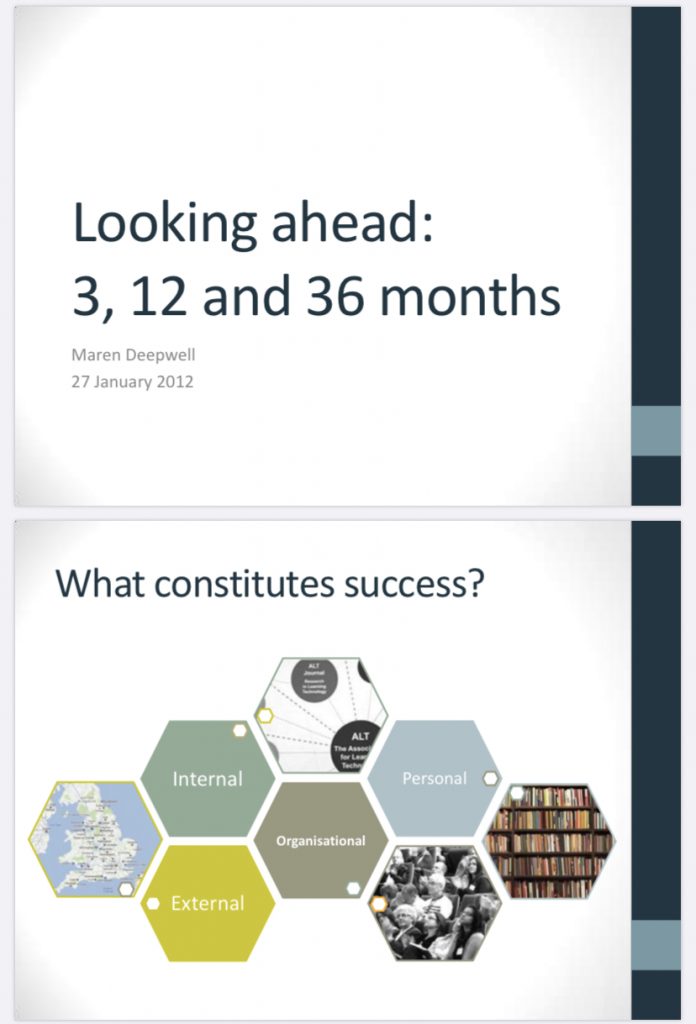Creating strategies is a big part of my work. Some are small and fit a particular purpose, others span an entire organisation and many years. It’s the second kind that I am currently working on as ALT is half way through setting out a new strategy for 2020-2025.
Our process involves many people, with their own views, ideas and voices and it’s all the richer for it. ALT’s Chair, Sheila, and I, blog about our progress regularly and if you haven’t already, I would encourage you to engage and make your voice heard.
For me, this new strategy will be a living, breathing, practical framework for pretty much everything I work on for the next five years, just as the last one has been. So every ounce of effort, every speck of gold dust that I can help channel into it now, is going to make a big difference further down the line.
A lot of my thinking as ALT’s chief executive develops alongside and through the wider consultation process with our Board of Trustees, staff, Members and the wider network. But there are some things I think through on an individual basis.
For example, when I applied for my job in 2012, part of the interview process involved giving a presentation about my vision for ALT. I still have that slide deck…

Since then, ever few years when we start to write a new strategy, I sit down, and I prepare another presentation pretending to be applying for my job all over again.
It’s a useful tool I find. It helps me to step outside of what I think I already know about the organisation and try to see it with fresh eyes. It prompts me to ignore all practicalities and focus on vision instead. As a new ceo you never quite know what you are going to inherit. How many skeletons in the closet.. how much willingness to change.. what kind of internal agendas that dictate what can and cannot happen. You have an excuse to clean house, to start from a blank slate. A new strategy has a similar power… it can help reset the board. It gives you the freedom to start afresh. It’s an exciting moment.
As we began working on the strategy, one of my colleagues asked me whether a strategy is all about the future. That’s a very useful question. I suppose, in a practical sense, much of the strategy itself will focus on what’s ahead. But in many ways I don’t think creating a strategy is all about the future because you also want to understand, learn from and build on where you have already been. Making meaningful progress and change depends on not ignoring what you already know, problems you have already identified. In many ways it’s the opposite of what Sir Humphries does in Yes, Minister in order to manage his Ministers. Dusting off the same old idea and repackaging it in brand new marketing is a successful way of avoiding change whilst always hailing the next big thing. It doesn’t challenge the status quo.
Change is good to think about in the context of strategies. The more radical your vision, the more work it takes to bring everyone with you. The more things change, the more effort it takes to communicate that change and make everyone notice. Here’s where working closely with the tech sector is not always an easy thing because the narratives of change in technology tend to be about shininess, all about seamless transitions and problem solving. Often I come across sexy must have solutions to problems I didn’t know existed. That’s the kind of change that’s easy to buy in to, literally. Change that takes years to plan and longer to bed in and real effort to implement for years and at scale is far less sexy and so much more meaningful for an organisation like mine. That’s why looking at the landscape, listening to what’s at the heart of the community, taking time to step back and really look at where we’ve come from is so valuable.
I like to dabble in doing some development work. I can’t do the really tech heavy bits, but I like doing design, documentation and bug testing. Sometimes I get too ambitious about how many things can be improved or changed in one iteration, and getting others to test the workflow is a good way of identifying those things and improving the design in response. Strategies are quite similar for me. I start from a point of where I can see we will be in 5 years time and then work backwards until my ideas converge with everyone else’s. Sticking with my tech metaphor, the strategy becomes like a user interface for where we are headed.
The last time we created a strategy the process taught me much about the value of listening and collaborating, of what can be achieved when you work together, share power and responsibility. It was an rewarding experience for me on a personal basis as well as greatly beneficial for the organisation. It also taught me the value of setting aside time to dream about the future.